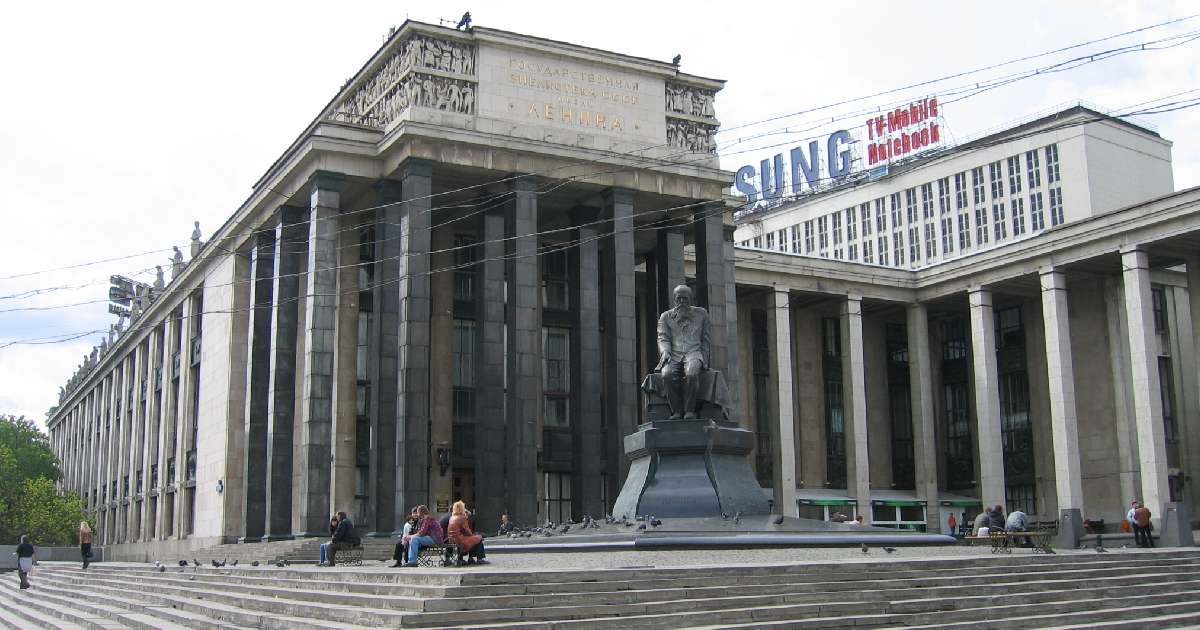Libraries are a treasure trove of knowledge, preserving the intellectual and cultural heritage of humanity. Among them, some stand out due to their vast collections and significance. This article delves into the ten largest libraries in the world by catalog size, highlighting their unique features and contributions to knowledge and culture.
10. The Danish Royal Library

- Number of Items: 30.2 million
- Location: Copenhagen, Denmark
- Key Feature: Home to a 1350 manuscript of a medieval “Wikipedia” by Jacob van Maerlant
The Danish Royal Library, also known as the Royal Danish Library, is Denmark’s national library and the University of Copenhagen’s university library. It stands as the largest library in the Nordic countries. This impressive institution houses nearly all printed Danish works dating back to 1482, including the first Danish book produced in the same year.
In addition to its extensive collection of physical items, the library has embraced digital preservation, holding over 500 terabytes of electronic publications. It has been a legal deposit library since 1697, ensuring the preservation of Denmark’s literary heritage. The library’s blend of ancient manuscripts and modern digital collections makes it a pivotal institution in the preservation and dissemination of knowledge.
9. The National Library of China

- Number of Items: 33.78 million
- Location: Beijing, China
- Key Feature: The largest collection of Chinese literature and historical documents
The National Library of China, located in Beijing, is the largest library in Asia and a cornerstone of China’s cultural heritage. Established in 1909, it serves as a legal depository for domestic publications, a role it has fulfilled since 1916. This library’s collection includes an extensive array of Chinese literature, historical documents, and manuscripts.
The library is not just a repository of books; it is a vital center for research and education. It provides access to a vast array of resources, both physical and digital, making it an essential institution for scholars and researchers. The National Library of China’s commitment to preserving Chinese culture and history is evident in its comprehensive collections and ongoing digitization efforts.
8. National Diet Library

- Number of Items: 35.6 million
- Location: Tokyo and Kyoto, Japan
- Key Feature: Major collections of Japanese political history documents
Established in 1948 to assist Japan’s National Diet members in their research, the National Diet Library is Japan’s sole national library. It boasts an impressive collection that includes documents from Japan’s political history, rare books, maps, and extensive science and technology materials.
With main facilities in Tokyo and Kyoto, as well as branches across Japan, the library is accessible to the general public. Its online catalog (OPAC) allows users to search its extensive collections, and materials can be borrowed through interlibrary loans, even internationally. The National Diet Library’s dedication to accessibility and comprehensive collections makes it a critical resource for scholars worldwide.
7. National Library of Russia

- Number of Items: 36.5 million
- Location: St. Petersburg, Russia
- Key Feature: The oldest public library in Russia, established by Empress Catherine the Great
The National Library of Russia, located in St. Petersburg, is the oldest public library in the country, founded in 1795 by Empress Catherine the Great. With over 36.5 million items, this library has a rich history and an extensive collection that includes books, manuscripts, maps, and more.
In recent years, the library has focused on digitization, making a significant portion of its collection available online. This effort ensures that valuable historical documents are preserved and accessible to a global audience. The National Library of Russia’s historical significance and modern initiatives make it a vital institution for research and cultural preservation.
6. Bibliothèque Nationale de France

- Number of Items: 40 million
- Location: Paris, France
- Key Feature: Historical roots dating back to 1368
The Bibliothèque Nationale de France (BNF) traces its origins to 1368, making it one of the oldest libraries in the world. Located in Paris, the BNF has undergone numerous relocations and transformations, finally settling in its current location in 1996. The library’s collection exceeds 40 million items, including books, manuscripts, maps, and more.
The BNF offers guided tours and provides access to its extensive collections through various branches. Notably, the library embraced digitalization and now offers WiFi connectivity, contrary to its earlier decision to avoid wireless internet. The BNF remains a cornerstone of French culture and history, continually adapting to modern needs while preserving its rich heritage.
5. Russian State Library

- Number of Items: 43 million
- Location: Moscow, Russia
- Key Feature: Over 275 km of shelves
The Russian State Library in Moscow, established in 1862, is one of the largest libraries in the world. With more than 43 million items and over 275 kilometers of shelves, this library is a monumental repository of knowledge. It served as the national book depository in Russia and was reorganized by Vladimir Lenin, who integrated books from confiscated public libraries into its collection.
The library’s extensive collection and its role as a legal deposit library ensure the preservation of Russia’s literary and cultural heritage. Its reading rooms are open to anyone over the age of 18, providing access to a vast array of resources for both residents and non-residents. The Russian State Library is a key institution for research and education in Russia and beyond.
4. New York Public Library

- Number of Items: 52 million
- Location: New York City, USA
- Key Feature: Iconic literary and cultural landmark featured in films and literature
The New York Public Library (NYPL) is an iconic institution, both as a cultural landmark and a vast repository of knowledge. With nearly 52 million items, it serves millions of patrons across its 92 locations each year. The NYPL has been featured in numerous films and literature works, including “Ghostbusters” and “Sex and the City.”
In addition to its extensive physical collections, the NYPL participates in the Google Books Library Project, making its digital collections widely accessible. The library offers a range of services, including reference assistance through its ASK NYPL service, free events, exhibitions, computer classes, and ESL lessons. The NYPL’s commitment to accessibility and community engagement makes it a vital resource for New Yorkers and visitors alike.
3. Library and Archives Canada

- Number of Items: 54 million
- Location: Ottawa, Canada
- Key Feature: Holds the oldest surviving document ever printed in Australia
Library and Archives Canada, established in 2004 through the merger of the National Archives of Canada and the National Library of Canada, boasts a collection of over 54 million items. This young institution plays a crucial role in preserving Canada’s documentary heritage. It is located in Ottawa and offers various services and opening times to the public.
One of its most notable holdings is the oldest surviving document ever printed in Australia, discovered by one of the library’s rare book librarians. This artifact exemplifies the library’s commitment to preserving rare and significant historical documents. Library and Archives Canada is a cornerstone of Canadian heritage, providing invaluable resources for researchers and the public.
2. British Library

- Number of Items: 150 million
- Location: London, United Kingdom
- Key Feature: Legal deposit library receiving a copy of every publication in the UK and Ireland
The British Library, located in London, is one of the largest libraries in the world, with a collection of over 150 million items. As a legal deposit library, it receives a copy of every publication produced in the UK and Ireland, adding approximately 3 million new items annually. This extensive collection includes books, manuscripts, maps, and databases, among other research materials.
The library is open to the public, with access granted through a Reader Pass. The British Library’s collection features significant historical documents, such as the Magna Carta, the Beatles manuscripts, and the recording of Nelson Mandela’s Rivonia Trial Speech. The British Library’s role as a research library and its vast collections make it a vital institution for scholars and the public.
1. Library of Congress

- Number of Items: 160 million
- Location: Washington D.C., USA
- Key Feature: Oldest federal cultural institution in the United States
The Library of Congress, located in Washington, D.C., is the largest library in the world by catalog size, with over 160 million items. Established in 1800, it is the oldest federal cultural institution in the United States. The library’s collection includes books, manuscripts, maps, and the rough draft of the Declaration of Independence, among other significant documents.
Housed in three buildings on Capitol Hill, the Library of Congress is open for academic research to anyone with a Reader Identification Card. Although books can only be used on the premises, U.S. libraries can borrow items through interlibrary loan. The library offers free guided tours and is a must-visit for anyone in Washington, D.C. Its role in preserving and providing access to a vast array of knowledge makes it a cornerstone of American culture and history.
Conclusion
The world’s largest libraries are more than just repositories of books; they are living institutions that preserve our collective knowledge and cultural heritage. From the historical treasures of the Danish Royal Library, the vast holdings of the Library of Congress, and those not mentioned, such as Shanghai Library and Boston Public Library, these libraries play a crucial role in our intellectual and cultural lives. Whether you are a researcher, a student, or a casual reader, these libraries offer an unparalleled wealth of resources and insights into the world’s knowledge.
Frequently Asked Questions (FAQs)
Which is the largest library in the world?
The largest library in the world is the Library of Congress, located in Washington, D.C., USA. It boasts a catalog size of over 160 million items, including books, manuscripts, maps, photographs, and digital materials. Established in 1800, it serves the U.S. Congress and is open to the public for research, offering a vast array of resources and historical documents.
What is the biggest library in the USA?
The biggest library in the USA is the Library of Congress. With over 160 million items in its collection, it surpasses all other libraries in the country in terms of catalog size. It serves not only as a resource for the U.S. Congress but also as a public research institution, housing significant historical documents, books, and digital materials.
Is the Library of Congress larger than the British Library?
Yes, the Library of Congress is larger than the British Library. The Library of Congress holds over 160 million items, making it the largest library in the world by catalog size. In contrast, the British Library has a collection of over 150 million items. Both are significant research libraries, but the Library of Congress has a larger total collection.
Is the British Library the biggest in the world?
No, the British Library is not the biggest in the world. It is one of the largest, with over 150 million items in its collection, but the title of the largest library in the world goes to the Library of Congress in Washington, D.C., which houses over 160 million items, including books, manuscripts, maps, and various other materials.
Is Harvard Library the biggest library in the world?
No, Harvard Library is not the biggest library in the world. However, it is the world’s largest academic library, with an extensive collection of over 20 million items. While it is significant in the academic and research community, the title of the largest library in the world belongs to the Library of Congress, which has over 160 million items.

